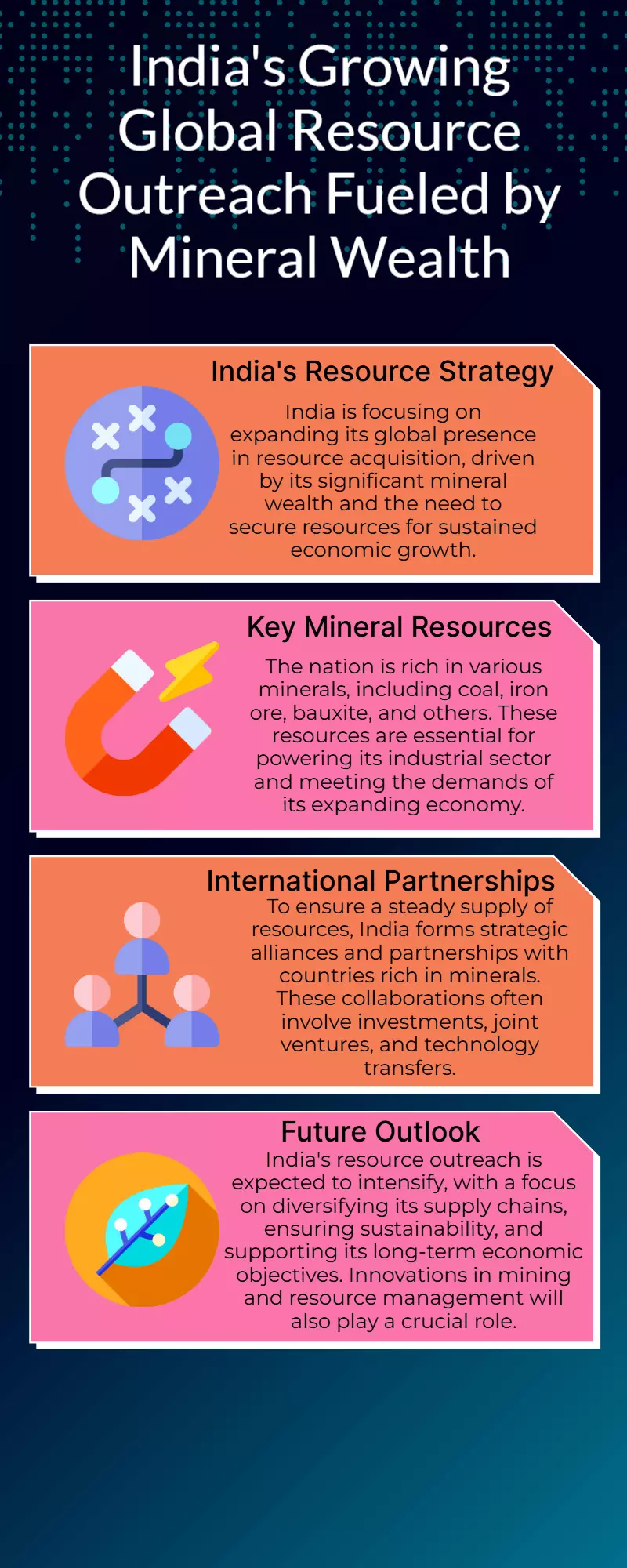Mineral Riches Spur India's Global Resource Outreach

By : Krishna Mishra
India's Mineral Diplomacy Gains Urgency Amid China’s Rare Earth Curbs
Rare earth elements have once again taken center stage as China’s export restrictions disrupt production across several global industries. Sectors such as automotive, electronics, defense, aerospace, and renewable energy, which depend heavily on these minerals, are facing mounting challenges. India, like many other nations, is grappling with the fallout, particularly in the electric vehicle (EV) and broader automobile sectors, where rare earth magnets play a crucial role.
The current crisis began in April when Beijing implemented export curbs in response to former U.S. President Donald Trump’s threat of imposing steep tariffs on Chinese imports. While the move was largely seen as targeting the U.S., its ripple effects have extended to India and other countries. Indian industries are now facing bureaucratic hurdles and sourcing delays, especially for rare earth magnets vital to EV production. The situation has brought to light the dangers of depending too heavily on a single source, prompting Prime Minister Narendra Modi to issue a stark warning at the recent BRICS summit in Rio de Janeiro: critical minerals must not be “weaponised.”
However, rare earths are just one part of a broader strategic mineral supply issue. Other critical resources like lithium, copper, zinc, and uranium are equally important for emerging technologies like semiconductors, clean energy, and advanced manufacturing. Recognizing this, India has begun actively pursuing resource-focused diplomacy. Prime Minister Modi’s recent overseas visits to mineral-rich countries such as Ghana and Namibia in Africa, as well as Argentina and Brazil in Latin America, reflect this strategy.
In Ghana, which shares deep historical ties with India dating back to the Non-Aligned Movement era, investment proposals to develop its mineral wealth are being welcomed. The West African country holds significant reserves of gold, diamonds, manganese, and recently discovered lithium—resources crucial for India’s strategic needs. In Namibia, where India has longstanding goodwill due to its support during the independence movement, Modi's visit focused on collaboration in mineral exploration and digital financial infrastructure. Namibia’s uranium reserves could prove essential for India’s nuclear energy ambitions, and the two nations are also exploring ways to streamline diamond trade for mutual benefit.
Minerals were a top priority during Modi’s stop in Latin America as well. In Argentina, India is already working with local partners to tap into the country’s vast lithium reserves. Argentina is part of the “Lithium Triangle” along with Bolivia and Chile, home to the world’s richest lithium deposits. Lithium is the backbone of lithium-ion batteries, which power everything from mobile phones and laptops to electric vehicles, renewable energy storage systems, and even critical aerospace and medical technologies.
Discussions in Brazil also centered around mineral cooperation. Brazil, which hosts the world’s third-largest reserves of rare earth elements, has only recently started mining them commercially. Plans for joint exploration, mining, processing, and refining of minerals were discussed, signaling growing cooperation between the two large democracies.
Despite India's rare earth reserves being the fifth largest globally—estimated at 6.9 million tonnes—the country’s domestic production remains minimal due to extraction challenges. These minerals are often found in complex geological settings, sometimes alongside radioactive elements like thorium, making mining both difficult and expensive. While China has not explicitly banned exports to India, it has imposed restrictions on seven rare earth elements, leading to persistent delays that threaten to cripple India’s tech-driven growth.
India’s recent diplomatic push is, therefore, a pragmatic move aimed at securing a steady and diversified supply of critical minerals. But diplomacy alone won't suffice. The country must urgently scale up domestic exploration and extraction. The launch of the National Critical Minerals Mission (NCMM) earlier this year is a welcome start. With an outlay of ₹36,000 crore over seven years, the mission aims to boost exploration, expand mining infrastructure, and acquire overseas assets. It also encourages building processing capabilities and reducing import dependency.
In the interim, India must continue to diversify its sources to avoid disruptions to its industrial output. Prime Minister Modi’s Global South-focused diplomacy is expected to play a crucial role in meeting both immediate and long-term supply needs. But the key lies in executing domestic reforms, investing in extraction technologies, and establishing India as a reliable player in the global critical mineral supply chain.
